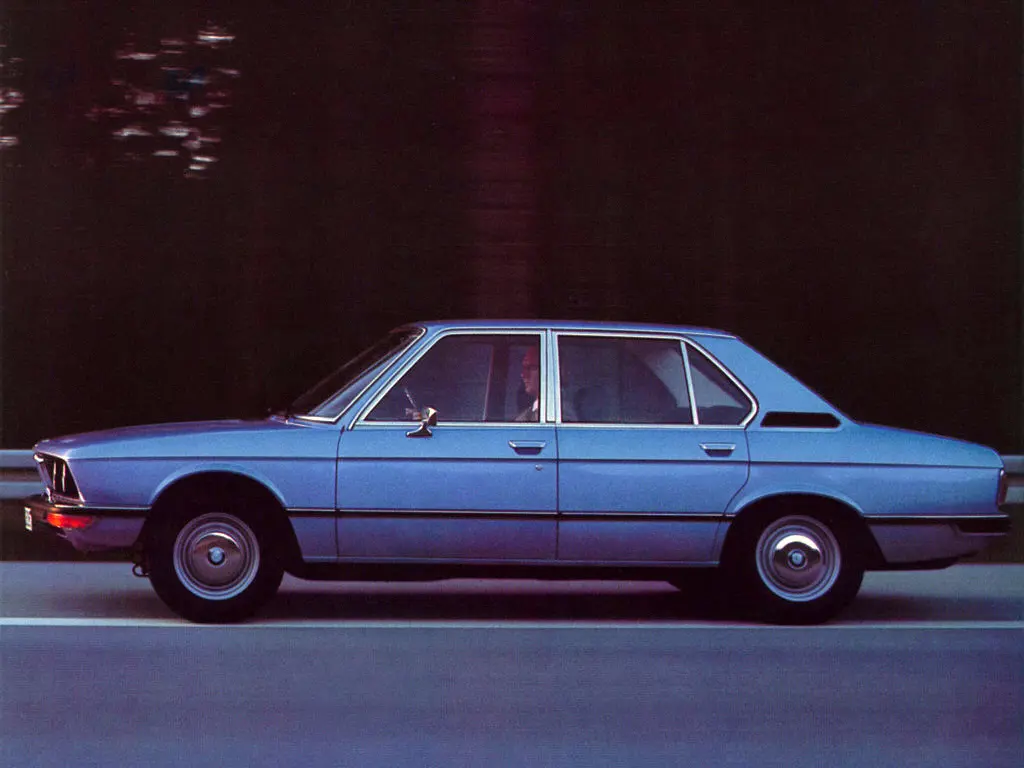THE BMW 5 SERIES AT FIFTY
29 March 2022
And so to another anniversary this April newsletter, as the iconic BMW takes centre stage. Form temporary, class permanent so the saying goes, as Andrew Roberts explains.
The phrase “Good design does not date” may be a cliché, but it remains true. The original 5 Series celebrates its fiftieth birthday this year, and while some contemporaries appear a relic of the early 1970s, the BMW consistently belies its age. It also refined the European sports saloon.
The company began work on the E12, the Neue Klasse’s heir, in 1968; E for "Entwicklung" or development and 12 for the project’s number. Then, in 1970, Bertone unveiled their Garmisch concept car, based on the 2002, at the Geneva Motor Show; the 5 Series would display several of its stylistic overtones. In that same year, BMW hired the great Paul Bracq to head its design department.

The 5 Series made its bow shortly after the end of the 1972 Olympic Games in Munich. The range initially consisted of the 520 and the 520i with Kugelfischer fuel injection. Observers also noted how the three-digit name harked back to the 501/502 saloons and the 507 two-seater of the 1950s. In Germany, the potential E12 buyer might have considered the Mercedes-Benz W114, the Audi 100 C1 or even the NSU Ro80.
Meanwhile, there was the Alfa Romeo 2000 Berlina and the Lancia 2000 Berlina from Italy, while French rivals included the Citroën DS23 and the Peugeot 504 Ti. Another option was the Volvo 144S, and across the Channel, there was the Rover P6, the Triumph 2000/2.5 PI Mk. II and the Jaguar XJ6 2.8.
This was a formidable array of competitors, but the 5-Series possessed several advantages. Firstly, it built on the eleven-year legacy of the Neue Klasse and secondly, it was a new model while several of its competitors could trace their origins to the early 1960s. Thirdly, domestic customers were likely to perceive it as more dashing than the Mercedes-Benz, which many Germans regarded as the nation’s favourite taxi.
And fourthly, the BMW was a car of remarkable ability. It was certainly an expensive proposition in the UK: at £2,999, the 520 was over £900 more than a Triumph 2.5 P and over £1,000 more than an Audi 100 GL. The price of the 520 was just £72 less than an XJ6 4.2, but mere finance did not prevent the motoring press from lauding the E12. In 1973 Bill Boddy of Motor Sport described the 520i as “by all standards a remarkable car” and how “The slogan on the back window says “Unbeatable BMW” - justifiably”.
That same year, Autocar described the “520i as expensive at £3,550; by comparison, a Rover 3500S cost £2,207. Yet, in what it does and how it does it, it could be worth even more”. However, many enthusiasts still craved a six-cylinder power plant. BMW introduced the 525 in late 1973. The August 1974 edition of Car grumbled about the wind noise when testing the BMW opposite the XJ6 3.4 S2 and the Ro80 but also thought:
Were our driving to consist mostly of minor-road work and we wanted to press on and extract the most enjoyment from every mile, we’d undoubtedly choose the BMW 525. When driven hard it displays excellent handling and roadholding. You can really take it and play with it in a way that’s not just possible in the bigger, heavier Jaguar.
At £4,099, the BMW was not exactly cheap, but its owner could justly claim it was a rare example of a mass-produced car that felt coach built. 1974 marked the debut of the 528 and the entry-level 518, with the 520i gaining Bosch J Jetronic injection in the following year.
BMW facelifted the range in 1976, with the 528 gaining fuel injection in 1977. The E28 replaced the E12 in 1981, and we will celebrate the M535i and Alpina versions later this year; they certainly merit a separate blog. And perhaps the main legacy of the original 5 Series is its elegant simplicity. Of course, some motorists needed vinyl roofs and exterior decoration to display their status – but with an E12, the roundel badge was more than enough.
